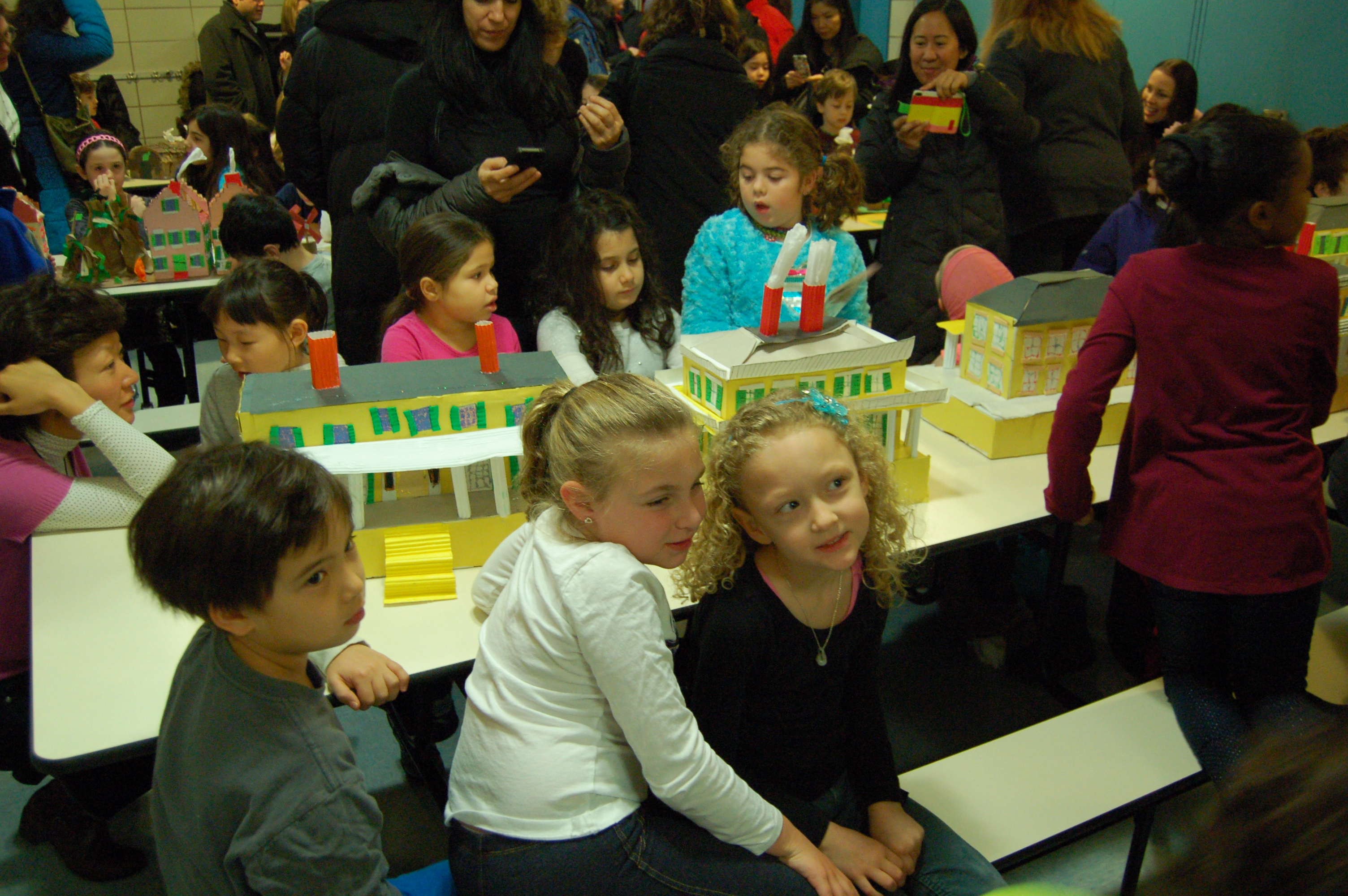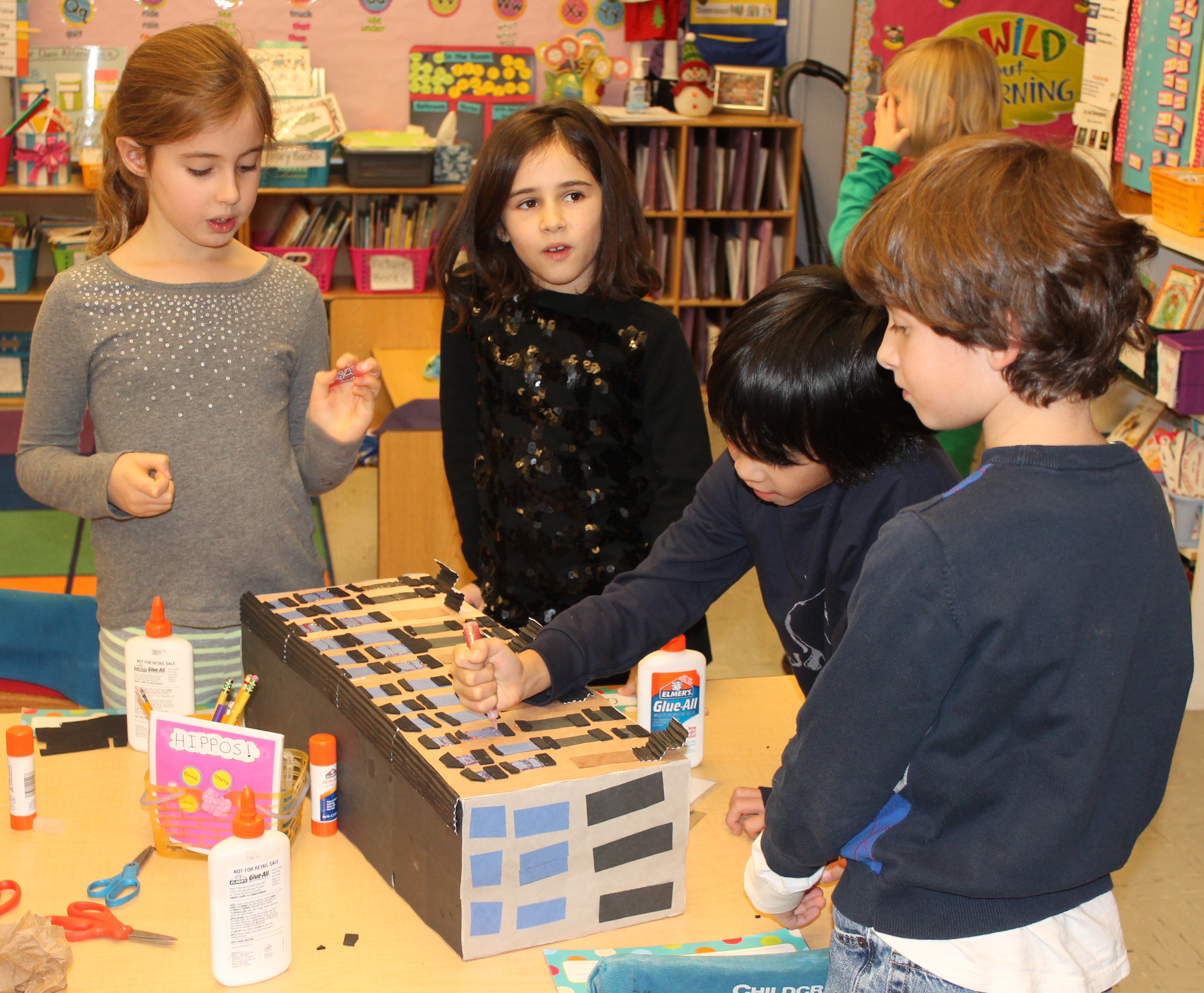by Catherine Teegarden Center for Architecture Foundation
Second-graders at PS 199 on Manhattan’s Upper West Side had an opportunity to teach their parents about the city’s history at the culminating celebration of their Learning By Design:NY program on New York City’s residential architecture. More than 130 students proudly presented their models of residential buildings, documenting 400 years of city history as told through changes in our residential architecture. Students toured admiring parents and siblings through this architectural timeline, which began with Native American longhouses and ended with today’s high-rise apartments. Other key stops along the way included Dutch farm houses, British colonial houses, country estates, row houses, tenement apartments, suburban-style houses that define many neighborhoods in the city’s outer boroughs, and turn-of-the-century apartment houses. Students pointed out how changes in building materials, size, and architectural details showed which buildings came later in the city’s history.
Now in its third year at the school, the Center for Architecture Foundation’s eight-week architecture program has become an integral part of PS 199’s second-grade Social Studies curriculum on New York City history. By studying how people in this area lived during different periods of history, students gain a concrete understanding of how the city itself grew. They observed and documented examples of many of these building types in their own neighborhood on a walking tour led by the Center for Architecture Foundation Design Educator Jane Cowan. Equipped with this first-hand investigation and classroom research on the topic, students then worked in groups to build models from different time periods in the city’s history. In addition to augmenting their Social Studies curriculum, teachers also value the skills the students developed in teamwork, observation, and geometry as they work on massing and detailing their models.
The Foundation’s K – 12 Learning By Design:NY program is active in 15 to 20 schools throughout the city annually. The dual goals of the program are to enrich the classroom curriculum and build students’ design sensibilities and awareness of the built environment in which they live. Programs are customized to target the age level and learning goals of each group, creating a wide range of topics and projects. Student work from the 2012-13 LBD:NY program is currently on view through 03.01.14 at the Center in the annual “Building Connections” exhibition. There is still some availability for new schools to join the program this spring. If you are interested in bringing Learning By Design:NY to your child’s school, please contact Catherine Teegarden, Director of Education, at cteegarden@cfafoundation.org for more information.
Catherine Teegarden is the Director of Education for the Center for Architecture Foundation.


